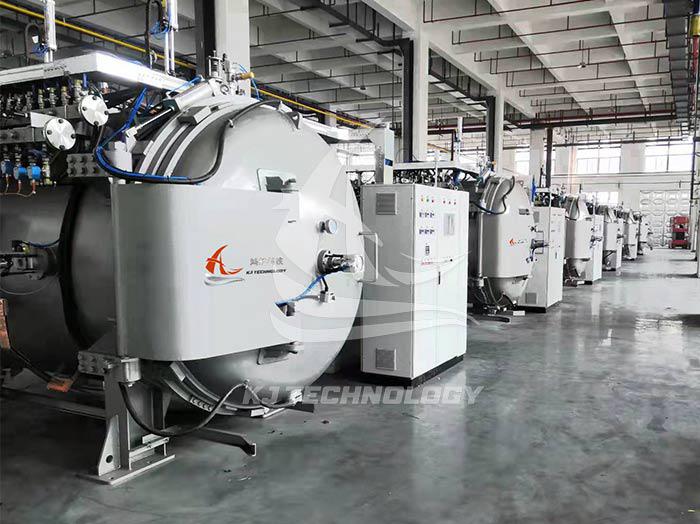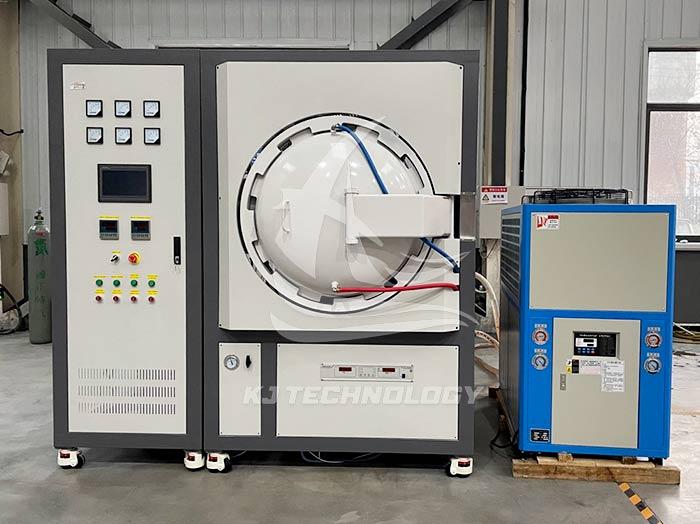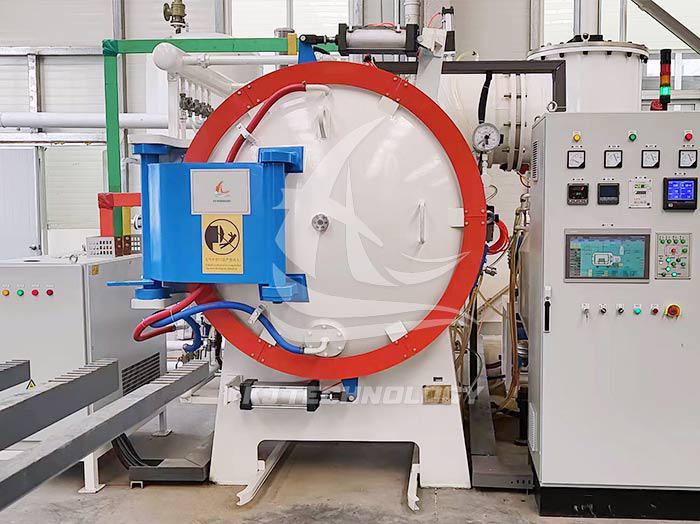Precautions for operating vacuum powder sintering furnace
 09-09-2025 Author: KJ technology
09-09-2025 Author: KJ technology
The operation of the vacuum powder sintering furnace must strictly follow safety regulations and technical requirements, especially in the medical industry where high temperature, high pressure, vacuum environment, and high-purity material processing requirements place extremely high demands on operational accuracy and safety. The following are the key precautions for operating a vacuum powder sintering furnace:
1. Preparation before operation
Equipment inspection
Vacuum system: Check the oil level (at 1/2-2/3 of the oil window) and oil quality (without emulsification or discoloration) of the vacuum pump, confirm that there are no leaks in the vacuum pipeline, and that the sealing ring is free of aging cracks.
Heating system: Check if the heating elements (such as molybdenum wire and graphite rod) are intact and there is no risk of breakage or short circuit; Test the accuracy of the temperature sensor (thermocouple) to ensure consistency with the controller display.
Pneumatic system: Confirm the compressed air pressure, the pneumatic valve operates flexibly, and there is no jamming; Check the inflation gas (such as argon, nitrogen) to ensure stable pressure.
Cooling system: Check the cooling water flow rate (usually ≥ 5L/min) and water temperature (≤ 30 ℃) to ensure that the waterway is not blocked or leaking.
Environmental Requirements
The operating room should be kept clean and free of flammable and explosive materials; The ground should be dry and slip resistant to prevent water stains from causing electrical leakage.
Reserve at least 0.5m of operating space around the furnace body for emergency shutdown or maintenance.
Material preparation
Powder processing: Medical grade powders (such as titanium alloys and zirconia) need to be pre treated in a Class 100 cleanroom to avoid contamination; The particle size distribution of the powder should meet the process requirements (such as D50=10-50 μ m).
Loading specifications: Use specialized tools (such as graphite molds, ceramic crucibles) for loading to avoid scratching the furnace with metal tools; The loading amount shall not exceed 80% of the furnace volume to prevent powder from flying.
2. Standardized operation
Vacuum pumping stage
Staged pumping: First, lower the vacuum (rough pumping) to below 10 ³ Pa, and then switch to high vacuum (fine pumping) to below 10 ⁻ Pa to avoid powder being quickly pumped and contaminating the vacuum pump.
Leakage detection: After vacuuming to 10 ⁻¹ Pa, close the vacuum valve and observe the pressure rise rate (≤ 0.5Pa/min is qualified). If it exceeds the standard, check the furnace door seal, observation window and other parts.
heating phase
Heating rate control: Set segmented heating curves based on material characteristics (such as titanium alloy: room temperature → 500 ℃ (10 ℃/min) → 1000 ℃ (5 ℃/min) → sintering temperature (3 ℃/min)) to avoid cracking caused by thermal stress.
Temperature uniformity monitoring: Real time monitoring of temperature difference (≤± 5 ℃) through multi-point thermocouples (such as the top, middle, and bottom of the furnace). If the deviation is too large, the heating power or furnace airflow needs to be adjusted.
Atmosphere protection: High purity argon gas (flow rate 0.5-1L/min) is introduced in the high temperature range (such as ≥ 800 ℃) to prevent material oxidation; Medical grade products require controlled oxygen content.
Sintering stage
Pressure control: If hot isostatic pressing (HIP) process is used, pressure needs to be applied in the later stage of sintering to ensure material densification; The pressure rise rate should be ≤ 5MPa/min to avoid mold rupture.
Insulation time: Set the insulation time according to the material thickness and diffusion coefficient (such as titanium alloy bone implants: 1200 ℃ insulation for 2 hours) to ensure that the powder is fully sintered.
cooling stage
Cooling rate control: Medical grade products need to be slowly cooled (such as ≤ 5 ℃/min) to below 200 ℃ before being removed from the furnace to avoid cracking or deformation caused by residual stress.
Inflatable protection: When cooled to below 100 ℃, dry nitrogen gas is introduced to break the vacuum and prevent water vapor condensation from contaminating the product.
3. Post operation maintenance
Furnace cleaning
After the furnace temperature drops below 50 ℃, clean the residual powder with a soft bristled brush; Medical grade products need to use a dust-free cloth dipped in alcohol to wipe the inner wall of the furnace to avoid cross contamination.
Check whether the surface of the heating element is oxidized or nodular, and if so, use sandpaper to gently polish or replace it.
Vacuum pump maintenance
Replace the vacuum pump oil (every 200 hours of operation or when the oil quality turns black) and clean the oil mist filter; Medical grade applications require the use of specialized vacuum pump oil to avoid volatile contamination of the product.
Check the inlet filter of the vacuum pump and clean it every 500 hours to prevent powder blockage.
Seal replacement
Replace the furnace door sealing ring every 100 cycles; The sealing ring of the observation window is replaced every 50 cycles to ensure vacuum sealing.
When replacing the sealing ring, special vacuum grease should be applied to avoid hardening and cracking at high temperatures.
Data recording and tracing
Record the key parameters of each furnace (such as vacuum degree, temperature curve, pressure curve) and keep them for at least 5 years; Medical grade products need to be associated with batch numbers to achieve full process traceability.
4. Security protection
personal protection
Operators are required to wear heat-resistant gloves, goggles, and dust masks; Medical grade applications require wearing sterile clothing to avoid contamination of the product by human debris.
Prohibit wearing metal jewelry (such as watches, rings) to operate equipment and prevent electric arcs from igniting.
emergency response
Power outage: Immediately turn off the heating power and maintain a vacuum state; If the power outage lasts for more than 30 minutes, the furnace should be slowly inflated to prevent uneven heating and cracking of the furnace.
Vacuum leakage: Press the "emergency stop" button urgently, close the vacuum valve, and turn on the ventilation system; If the leakage point is inside the furnace, it needs to be treated after the temperature drops below 50 ℃.
Fire: When a fire breaks out in the furnace, immediately cut off the power supply and introduce a large amount of nitrogen to extinguish the fire; It is forbidden to use water or foam fire extinguishers to prevent furnace from cracking.
Training and Qualification
Operators need to undergo professional training, familiarize themselves with equipment principles, process parameters, and emergency plans; Unauthorized personnel are prohibited from operating the equipment.








